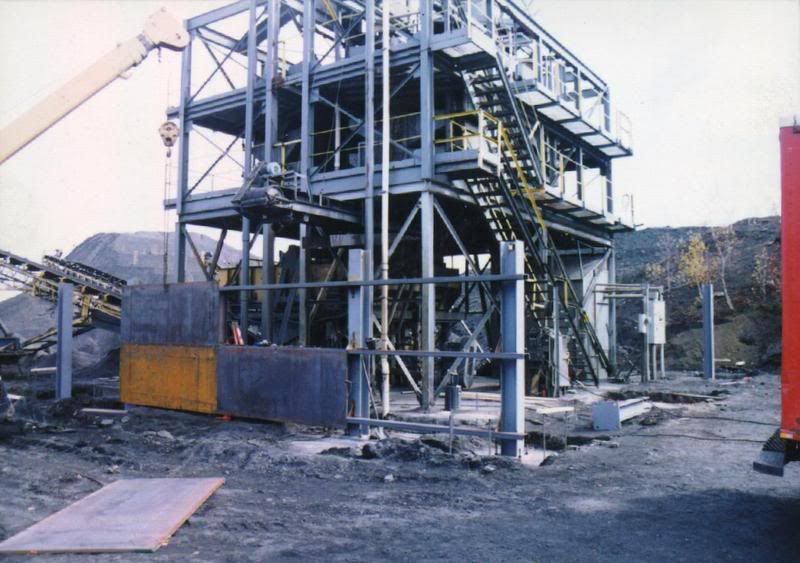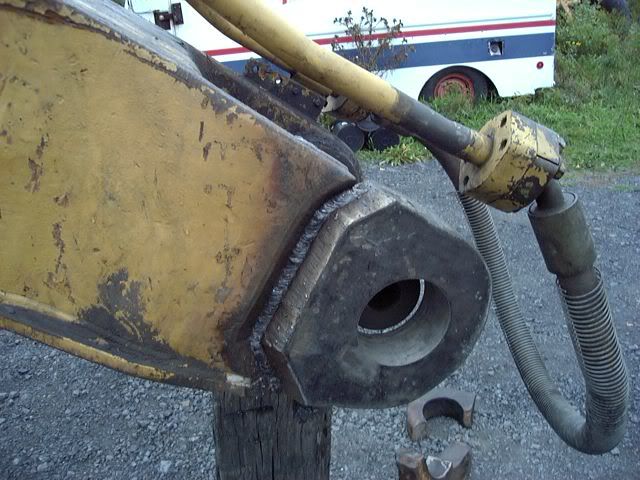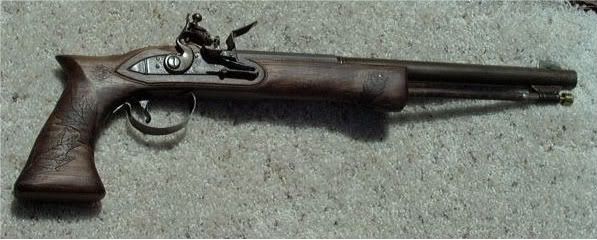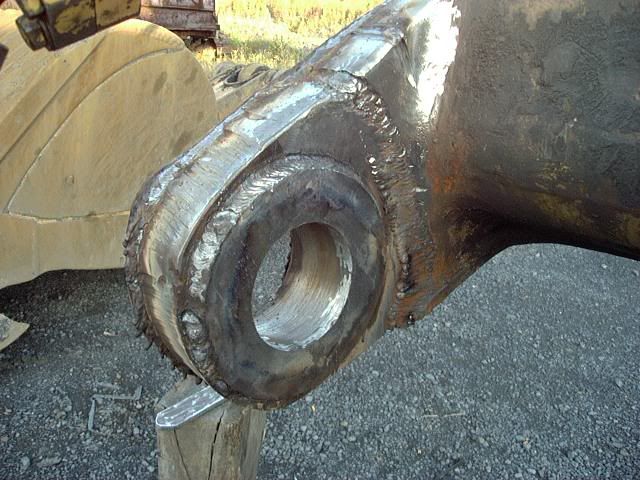I suggest craigslist.Anybody need 5 1934 Ford wire wheels, 4 are straight, one slightly off but fixable, no rust?
You are using an out of date browser. It may not display this or other websites correctly.
You should upgrade or use an alternative browser.
You should upgrade or use an alternative browser.
I am really hacked off!
- Thread starter Doc Hoy
- Start date
FL,
I think ENCO products are pretty good.
I am no machinist but they seem to be very well accepted by folks who are.
I was just playing around with some light machine work the other day.
As soon as I get over the embarassment I will post some photos. The whole thing is hilarious. In fact I will probably post it under that title.
I think ENCO products are pretty good.
I am no machinist but they seem to be very well accepted by folks who are.
I was just playing around with some light machine work the other day.
As soon as I get over the embarassment I will post some photos. The whole thing is hilarious. In fact I will probably post it under that title.
Anybody need 5 1934 Ford wire wheels, 4 are straight, one slightly off but fixable, no rust?
$150 plus $8.95 flat rate shipping sound right?
FL-Flinter
New member
Doc
The Enco needs some fine tuning but overall it's a good machine. I was hesitant on getting one until I talked with several good machinist who all gave good feedback. Common agreement is that they are a one-operator machine, employees will destroy them in short order and they don't take kindly to being crashed. Comparing it to the Vectrax (MSC brand) that sells for about $2k more, the Enco is better mechanically although not as asthetically pleasing. Personally, I don't much care what it "looks" like as long as it's built right. I did find a few little quirks, after 27 years of working on machinery and 22 years of building custom machinery, I tend to be a little more picky than others. I did refuse to buy the sheetmetal stand, I like having big iron under things.
The Enco needs some fine tuning but overall it's a good machine. I was hesitant on getting one until I talked with several good machinist who all gave good feedback. Common agreement is that they are a one-operator machine, employees will destroy them in short order and they don't take kindly to being crashed. Comparing it to the Vectrax (MSC brand) that sells for about $2k more, the Enco is better mechanically although not as asthetically pleasing. Personally, I don't much care what it "looks" like as long as it's built right. I did find a few little quirks, after 27 years of working on machinery and 22 years of building custom machinery, I tend to be a little more picky than others. I did refuse to buy the sheetmetal stand, I like having big iron under things.
FL,
Before my 10X22 I had a Grizzly lathe, mill drill. I crashed it one time.
The lead screw follower immediately fell into two or three pieces. I called Grizzly and the follower cost five bucks. I also bought the two screws that hold it in place. Total repair was seven dollars plus shipping and I thought to myself,..."Dang....That is a pretty smart design..." A guy who had to depend on the machine would have an extra follower on hand just in case. Ten minutes to replace the follower.
As I said, I am no machinist. Just a tinkerer. I am the only one who uses my stuff. And I am a devoted cheapskate. I would have enjoyed a career in metal working.
I have to learn more about heat treating. Read my thread; "Hilarious" for a good laugh.
Before my 10X22 I had a Grizzly lathe, mill drill. I crashed it one time.
The lead screw follower immediately fell into two or three pieces. I called Grizzly and the follower cost five bucks. I also bought the two screws that hold it in place. Total repair was seven dollars plus shipping and I thought to myself,..."Dang....That is a pretty smart design..." A guy who had to depend on the machine would have an extra follower on hand just in case. Ten minutes to replace the follower.
As I said, I am no machinist. Just a tinkerer. I am the only one who uses my stuff. And I am a devoted cheapskate. I would have enjoyed a career in metal working.
I have to learn more about heat treating. Read my thread; "Hilarious" for a good laugh.
FL-Flinter
New member
Doc
The Enco comes with a fenolic intermediate gear on the lead screw drive that is the sacrificial lamb - I'd have elected to use a clutch assembly, and probably will make my own for it eventually but having a some kind of fuse in the circuit is better than nothing. Only thing I don't like so far is the lack of standard "run" switch other than the apron lever. The lever is a pain in the *** when doing quick cut & measure work, you can bet that when the warranty period is up, this one is going to get re-built ... much like everything else I own.
I read the nipple thread and was expecting to hear that the socket blew out. For that type of work, you need to use O-series tool steel, anneal it for machining then re-treat it for hardness & strength. The temps and times are critical as you need to hold the metal at it's particular temp for suffient time for it to normalize then the quench must be tailored to the particular alloy as well. In some cases alloys will need to run 2-3 normalizing cycles to obtain the proper grain structure. From there you move on to the draw-back cycle which is also alloy specific. Mild steel can be case hardened if enough carbon is present in the surface layers but it's still going to be soft & weak under the case. Case hardening does about nothing to increase the working properties of the steel as was learned the hard way ... US-35 bridge connecting Point Pleasant, West Virginia and Kanauga, Ohio (The Silver Bridge) utilized eyebar chain construction, heat treating of the eyes resulted in case hardening, once the case failed, the eye failed dropping the whole bridge killing forty-six. Aside from the actual cause of the initial problem, one can easily argue the lack of engineering foresight to allow for contingencies ... a lesson that still hasn't been learned by the majority over all these years.
A metalworking career isn't all that bad, I didn't limit myself, diversity was the key to getting work when the economy or markets shifted. Physical issues arising from injuries I got in the Navy put an end to my big iron work in '05.


The small stuff is much easier on my body...


The Enco comes with a fenolic intermediate gear on the lead screw drive that is the sacrificial lamb - I'd have elected to use a clutch assembly, and probably will make my own for it eventually but having a some kind of fuse in the circuit is better than nothing. Only thing I don't like so far is the lack of standard "run" switch other than the apron lever. The lever is a pain in the *** when doing quick cut & measure work, you can bet that when the warranty period is up, this one is going to get re-built ... much like everything else I own.
I read the nipple thread and was expecting to hear that the socket blew out. For that type of work, you need to use O-series tool steel, anneal it for machining then re-treat it for hardness & strength. The temps and times are critical as you need to hold the metal at it's particular temp for suffient time for it to normalize then the quench must be tailored to the particular alloy as well. In some cases alloys will need to run 2-3 normalizing cycles to obtain the proper grain structure. From there you move on to the draw-back cycle which is also alloy specific. Mild steel can be case hardened if enough carbon is present in the surface layers but it's still going to be soft & weak under the case. Case hardening does about nothing to increase the working properties of the steel as was learned the hard way ... US-35 bridge connecting Point Pleasant, West Virginia and Kanauga, Ohio (The Silver Bridge) utilized eyebar chain construction, heat treating of the eyes resulted in case hardening, once the case failed, the eye failed dropping the whole bridge killing forty-six. Aside from the actual cause of the initial problem, one can easily argue the lack of engineering foresight to allow for contingencies ... a lesson that still hasn't been learned by the majority over all these years.
A metalworking career isn't all that bad, I didn't limit myself, diversity was the key to getting work when the economy or markets shifted. Physical issues arising from injuries I got in the Navy put an end to my big iron work in '05.


The small stuff is much easier on my body...


Last edited:
FL-Flinter
New member
At least yours was a technical forget unlike this dummy I know who knew what he was doing was wrong yet punched a hole in his thumb with a screwdriver anyway .... No, I'm not mentioning any names! 
FL-Flinter
New member
Doc
That's just the root pass you see there, below is what looked like when it was done (except for where I didn't knock all the slag off yet. It's on a 245 Cat excavator, just a small machine, only 142,000 pounds and a 5 cu/yd bucket. Pin keeper sheared off the pin holding the stick to the boom, pin backed out tearing the ear off and leaving the stick hanging over the side of the coal pit, only thing that kept it from going to the bottom was friction against the ground and the hydraulic hoses. Cat said the whole boom tip had to be replaced because it was "impossible to fix it". I think it was somewhere around 36 hours total to get it back running again with the "repaired" boom tip, new pin and a keeper that wasn't going to fall off like the OEM Cat did. About a month later, same machine was in pile of shot rock, sheared two idlers off and threw the track. Cat refused to touch it where it was, claimed it was too dangerous. I used the boom to tilt it, got the broken idlers out and the track back on and walked it out of the hole under its own power so I could get the broke idler bolts out & reinstall the idlers. Idlers ... ooohhh, brings back nightmares of replacing all of them under a Fiat-Allis 41-B and nearly every bolt sheared off in the hole and of course, rusted in good too...had to burn & chisel every one out upside down. Ugly, 180,000# of just plain ugly! :barf:
BTW, if you're looking for a handy device for heat treating applications, check out the Extech 42560 IR non-contact t-meter, range of about -50 to +1900

That's just the root pass you see there, below is what looked like when it was done (except for where I didn't knock all the slag off yet. It's on a 245 Cat excavator, just a small machine, only 142,000 pounds and a 5 cu/yd bucket. Pin keeper sheared off the pin holding the stick to the boom, pin backed out tearing the ear off and leaving the stick hanging over the side of the coal pit, only thing that kept it from going to the bottom was friction against the ground and the hydraulic hoses. Cat said the whole boom tip had to be replaced because it was "impossible to fix it". I think it was somewhere around 36 hours total to get it back running again with the "repaired" boom tip, new pin and a keeper that wasn't going to fall off like the OEM Cat did. About a month later, same machine was in pile of shot rock, sheared two idlers off and threw the track. Cat refused to touch it where it was, claimed it was too dangerous. I used the boom to tilt it, got the broken idlers out and the track back on and walked it out of the hole under its own power so I could get the broke idler bolts out & reinstall the idlers. Idlers ... ooohhh, brings back nightmares of replacing all of them under a Fiat-Allis 41-B and nearly every bolt sheared off in the hole and of course, rusted in good too...had to burn & chisel every one out upside down. Ugly, 180,000# of just plain ugly! :barf:
BTW, if you're looking for a handy device for heat treating applications, check out the Extech 42560 IR non-contact t-meter, range of about -50 to +1900

Last edited:
FL,
I worked for a heavy construction company a while back and our big machines had two yards buckets. For road work and utility work in Virginia it is about all you need. They were John Deere and Cat machines. Biggest bulldozer we had was a John Deere 700 or a Cat D8.
I enjoyed that job. They hired me as their training director but it turns out they were not interested in doing any training.
I worked for a heavy construction company a while back and our big machines had two yards buckets. For road work and utility work in Virginia it is about all you need. They were John Deere and Cat machines. Biggest bulldozer we had was a John Deere 700 or a Cat D8.
I enjoyed that job. They hired me as their training director but it turns out they were not interested in doing any training.
